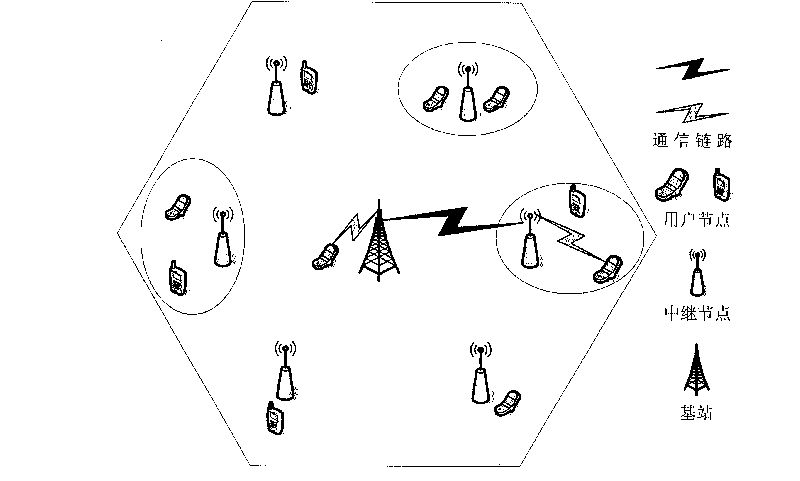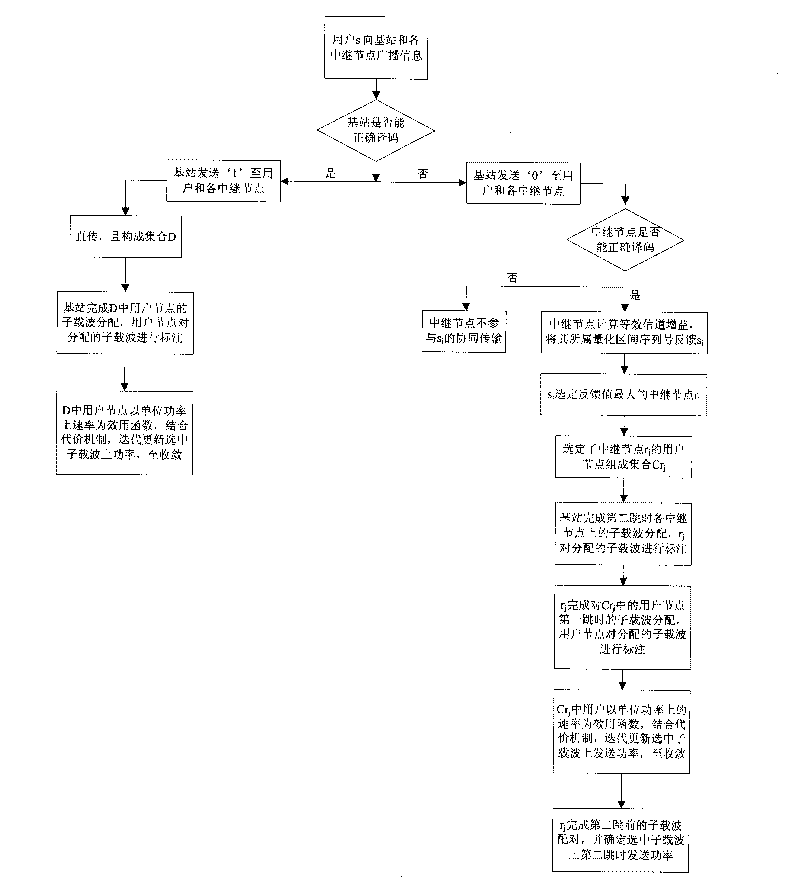Orthogonal frequency division multiple access relay system resource allocation method based on game theory
A technology of orthogonal frequency division multiple access and relay system, which is applied in the field of distributed dynamic resource allocation and can solve problems such as difficult modeling
- Summary
- Abstract
- Description
- Claims
- Application Information
AI Technical Summary
Problems solved by technology
Method used
Image
Examples
Embodiment Construction
[0043] Step 1: In a single-cell OFDMA relay system, including a base station d with N subcarriers, M r fixed relay node Form a fixed set of relay nodes Among them, M r is a positive integer, used to represent the number of fixed relay nodes in the system, j is [1, M r ] any positive integer in the range, and each fixed relay node r j With N subcarriers, the single-cell OFDMA relay system also includes randomly distributed M s user nodes , forming a set of user nodes Among them, M s is a positive integer, used to represent the number of user nodes owned by the system, i is [1, M s ] any positive integer in the range, and each user node s i With N subcarriers, each user node s i The maximum transmission power of N is a positive integer;
[0044] Step 2: user node s i to all fixed relay nodes r j and base station d to broadcast information, each fixed relay node and base station decodes it respectively, and judges whether the decoding is correct. Here, a cyclic ...
PUM
 Login to View More
Login to View More Abstract
Description
Claims
Application Information
 Login to View More
Login to View More - R&D
- Intellectual Property
- Life Sciences
- Materials
- Tech Scout
- Unparalleled Data Quality
- Higher Quality Content
- 60% Fewer Hallucinations
Browse by: Latest US Patents, China's latest patents, Technical Efficacy Thesaurus, Application Domain, Technology Topic, Popular Technical Reports.
© 2025 PatSnap. All rights reserved.Legal|Privacy policy|Modern Slavery Act Transparency Statement|Sitemap|About US| Contact US: help@patsnap.com



